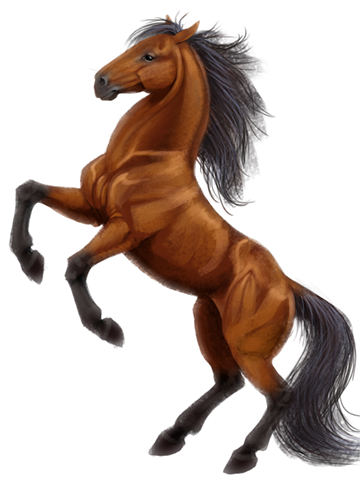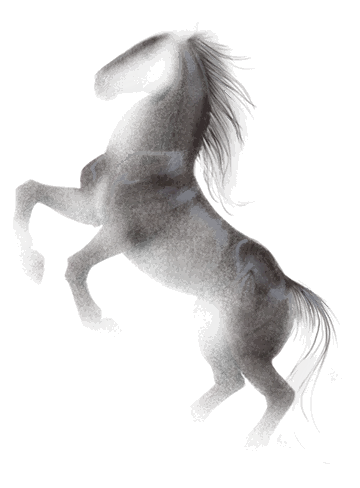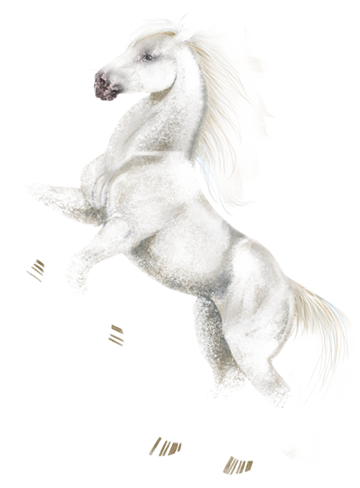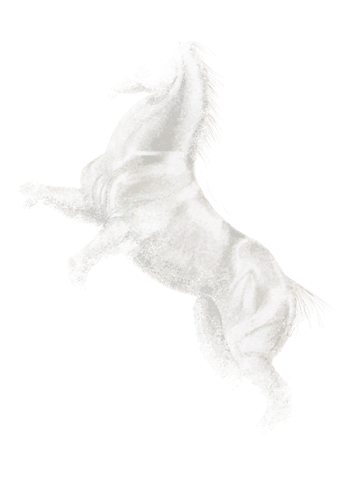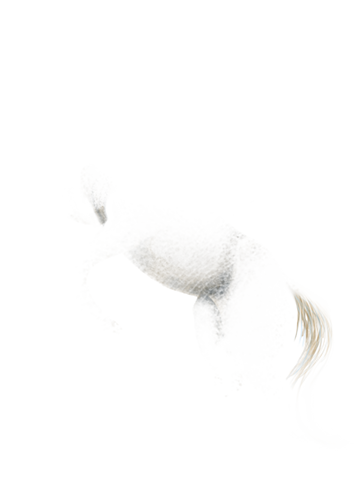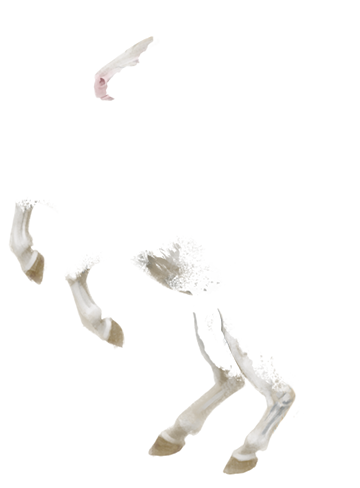
Jump to Game Window Jump to Game Window
The appaloosa color pattern is as complicated as it is beautiful. In this case the coloration is caused not by any one gene, but by an entire gene complex. The individual genes within this "leopard complex" can produce the widely varying appaloosa patternings we see.
All of the individual genes within the leopard complex are not understood, but due to the efforts of the Appaloosa Project we are beginning to understand a few. For example, we know that all appaloosa patterns can be turned off together. This key gene to appaloosa expression is referred to as "LP" for "leopard complex" and will, by itself, result in a varnish roan pattern. Two more genes, called PATN1 and PATN2 are responsible for the popular leopard and blanket spotting patterns. Without varnish roan, neither of these spotting patterns will show up, and with two varnish roan alleles, they will display as solid white without the characteristic spots.
Recognized appaloosa patterns include: leopard, blanket, fewspot, snowcap, varnish, and frost.
LP - Leopard Complex / Varnish Roan
The LP gene was named "leopard complex" when appaloosa genetics were still a complete mystery. It was known that this gene was required for appaloosa spotting, but not what other specifics determined how much or what type of spotting a leopard would get. We now know that this gene is responsible for the varnish roan pattern, which has no spotting in and of itself. The name was already established, however, so it still remains that way.
Varnish roan appaloosas have white hairs mixed into their base coat. Unlike a true roan, however, their white is patchy. It tends to concentrate on the rump and back, and leaves the legs dark. Small dark areas form on the hips and the bones of the face. The amount of roaning varies from horse to horse and increases with age. The speed of roaning can also vary greatly.
PATN1 - Pattern type 1
Leopard and fewspot patterns are both the result of PATN1 with different numbers of varnish alleles. One varnish allele with PATN1 gives a leopard appaloosa, while two varnish alleles with PATN1 give a fewspot appaloosa.
PATN2 - Pattern type 2
Blanket and snowcap appaloosas are both the result of PATN2 with different numbers of varnish alleles. One varnish allele with PATN2 gives a blanket appaloosa, while two varnish alleles with PATN2 give a snowcap appaloosa.
In addition to white patterning, all Appaloosas will have: pink mottling on otherwise black skin, striped hooves, and a visible sclera (white of the eye).
Previous: The KIT Gene - Home - Jump to Complete Genetics